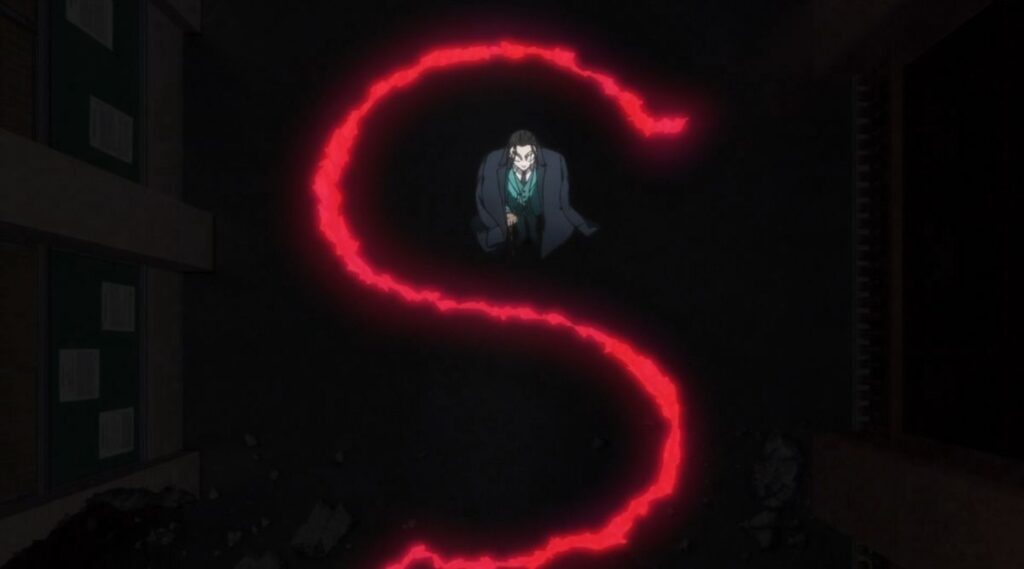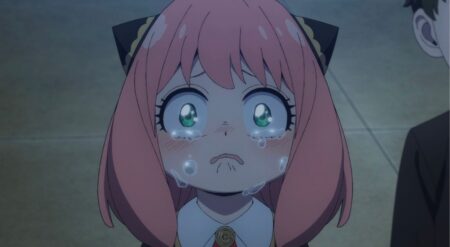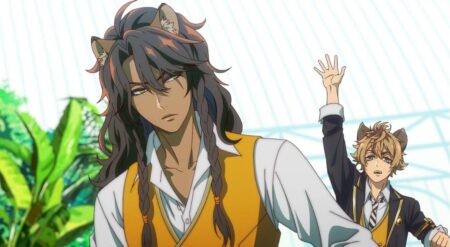Sanda Episodes 1-2, “Everything’s Bright, Am I Aging?” and “Candies, Canes, Kisses, and Blades,” is a one-two punch introduction to this fictional Japan world. Sanda is based on the manga series of the same name, written by Paru Itagaki, author of Beastars. Science SARU, the studio behind DanDaDan and Devilman: Crybaby (2018), produces this series. The anime is directed by Tomohisa Shimoyama and written by Kimiko Ueno. Tomoyuki Tanaka produces the splendid music.
The story is set in a near-future Japan, facing an era of extremely low birth rates. Children are treated as national treasures and are cared for and protected by adults in boarding schools. Santa Claus, who gives children hope and dreams, is considered a dangerous person and is targeted for elimination.
On December 25, when it was snowing, middle school student Kazushige Sanda’s (Ayumu Murase) body seal was broken by his classmate Shiori Fuyumura (Umeka Shouji), making him look like Santa Claus. From that day forward, he finds himself transforming into Santa whenever he wears red clothes.
Later, Sanda discovers that he can change back by eating jellybeans. The reason why Fuyumura lifted the seal was that she hoped that Sanda would help find her missing classmate, Ichie Ono. She also hoped that he would remind society of Christmas.
For fans of DanDaDan, Science SARU keeps up the wacky high school action-drama in Sanda Episodes 1-2.
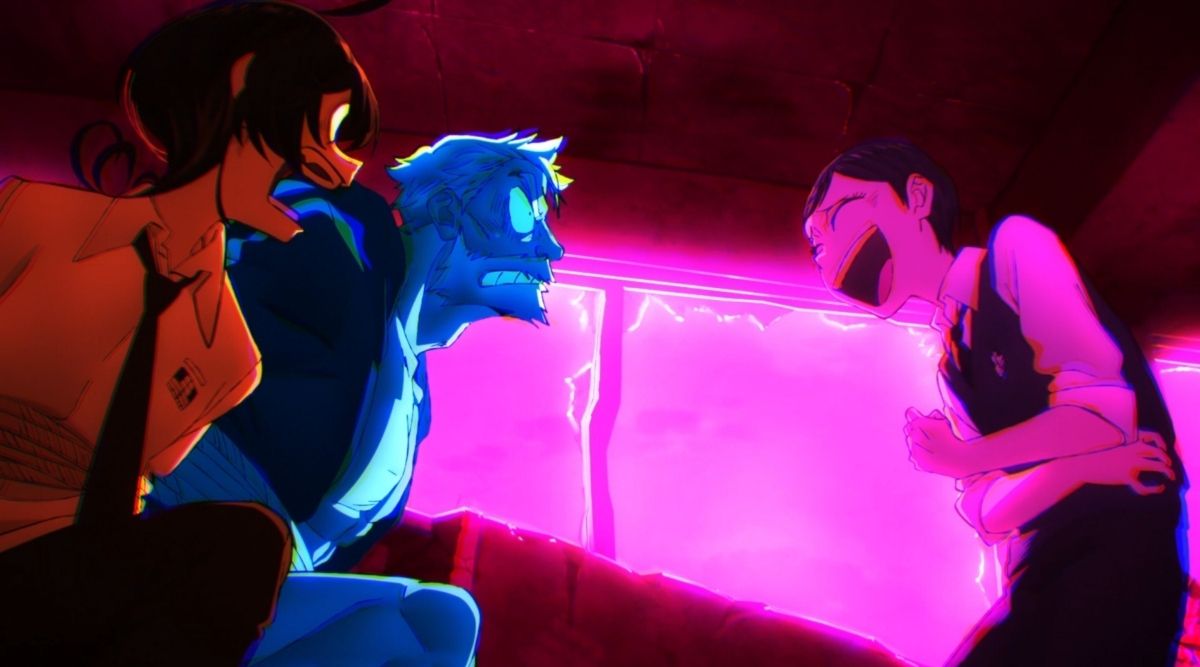
For those craving their next wacky, high school action-drama series after DanDaDan Season 2, Science SARU maintains their bread-and-butter animation experimentation style with Sanda. Sanda Episodes 1-2 showcase the cinematic feeling seen in DanDaDan, featuring Dutch angles and close-up 360-degree pan shots when Sanda transforms into Santa.
In Episode 2, there’s a cool moment where Sanda is talking to himself, but his mind is split with his Santa thinking when he says, “Kids really are life’s treasure.” There are visual indicators when Sanda is himself, and when he’s partly in Santa mode. These dynamic, playful shots demonstrate the attention to detail of Shimoyama and his team, as they avoid using static compositions.
The stand-out music, sound, and visual design for Sanda Episodes 1-2 significantly elevate the show.
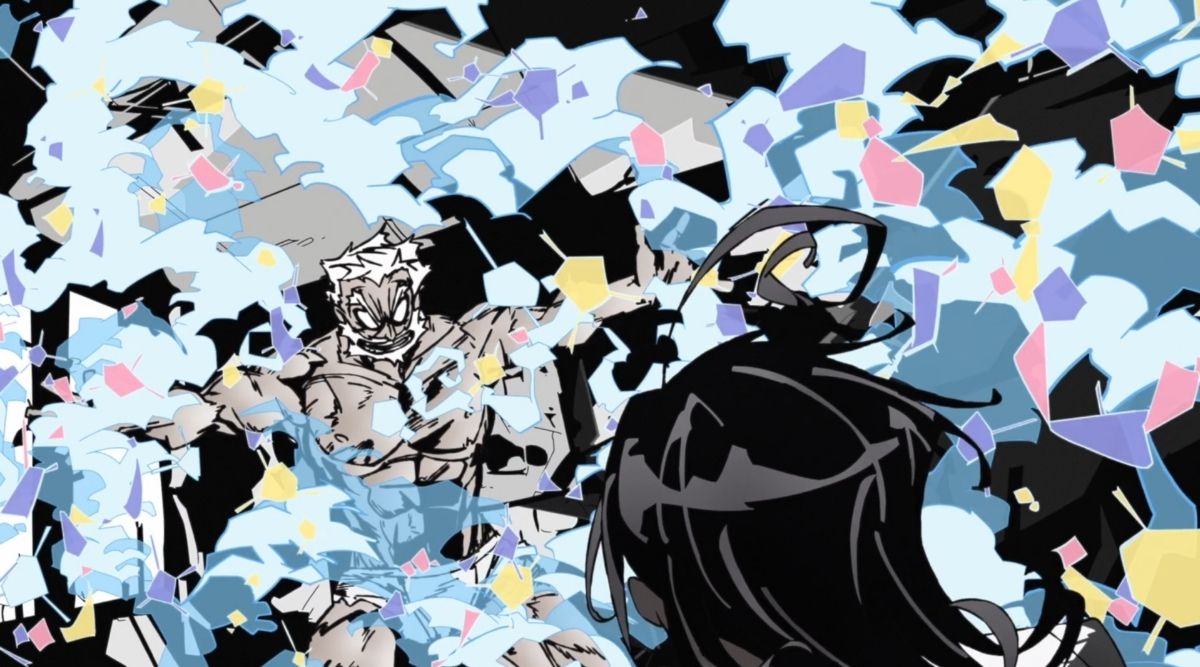
Science SARU always nails their color grading choices, and this series is no exception. From Episode 1, every character has similar pale skin, but has other distinguishing physical features to set them apart. Some characters have different eye shapes that branch off from traditional anime ones. They look simple, like Mirio Togata’s eyes in My Hero Academia.
In Sanda Episode 2, Sanda and Fuyumura square off against fellow classmate Hitoshi Amaya (Yuuki Shin), then the school headmaster Hifumi Ooshibu (Toshihiko Seki). The coloring choice to make Headmaster Hifumi’s suit color a forest green against Sanda’s red tracksuit in his Santa form is a standout shot. Both characters represent typical Christmas colors. Adding to the meaning behind those colors, they both appear to care for the kids, but with conflicting intentions.
To match the spectacular visuals, Tanaka’s music for the show hits on an unexpected level. Something about Science SARU using DJs for their action series is really working. In Sanda Episodes 1-2, there are a few funky tracks that build up to some high-flying jazzy beats. To back these sound notes, there are some house and EDM beats to drive up the tension and stakes when there’s immediate danger or a threat.
Using two voice actors for Sanda/Santa helps distinguish who is in control.
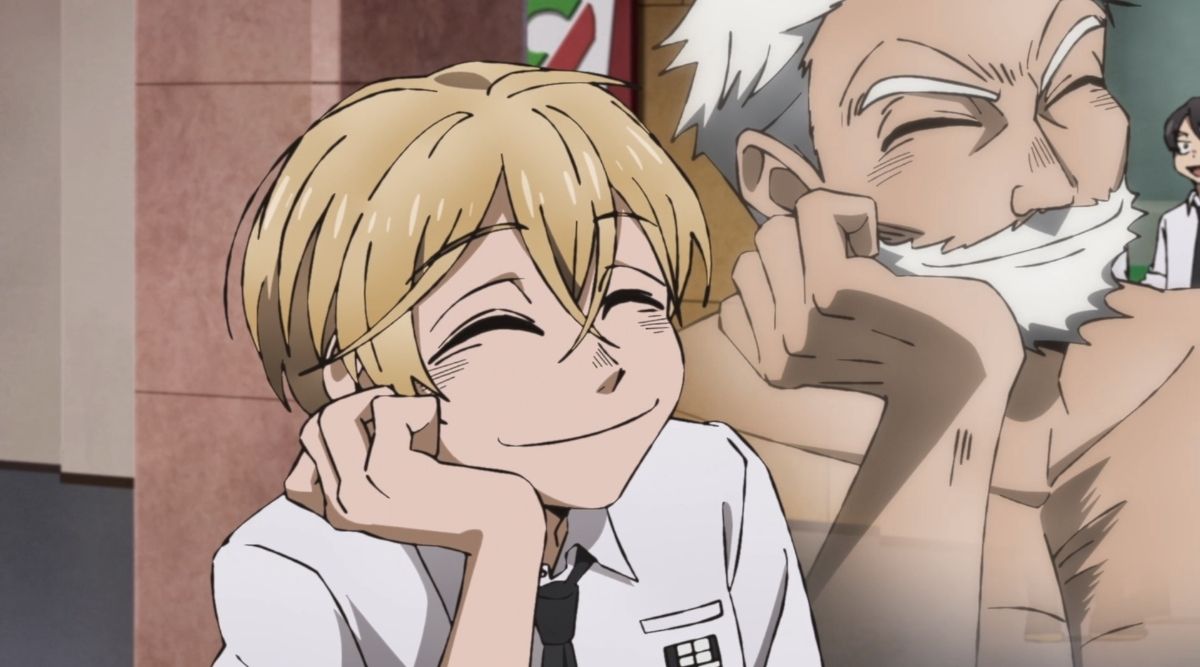
By the end of Sanda Episode 1, a bomb goes off in the school. Surprisingly, the sound isn’t a brand new explosion sound or crispier than in current action-heavy anime like Jujutsu Kaisen or My Hero Academia. Rather, the sound director Keiichirō Miyoshi and head of sound effects Katsuhiro Nakajima opt to use older captured explosion sounds.
It’s like hearing Gundams exploding back in its infancy days. This detail sticks out like a sore thumb, but it isn’t unwelcome in a bizarre story like this one. It adds to the nostalgia factor, and maybe that’s what they’re going for with the whole bringing back Santa in this world.
From a recording and sound perspective, Sanda presents some challenges. The main difficulty is that Sanda will sound starkly different than jolly Old Saint Nick. So, it’s a smart decision they decided to give Sanda two voice actors: one for Sanda and one for Santa. This is also a clever auditory cue to indicate to the viewer which voice/mind Sanda is speaking from.
Sanda Episodes 1-2 handle their large sum of exposition and worldbuilding well.
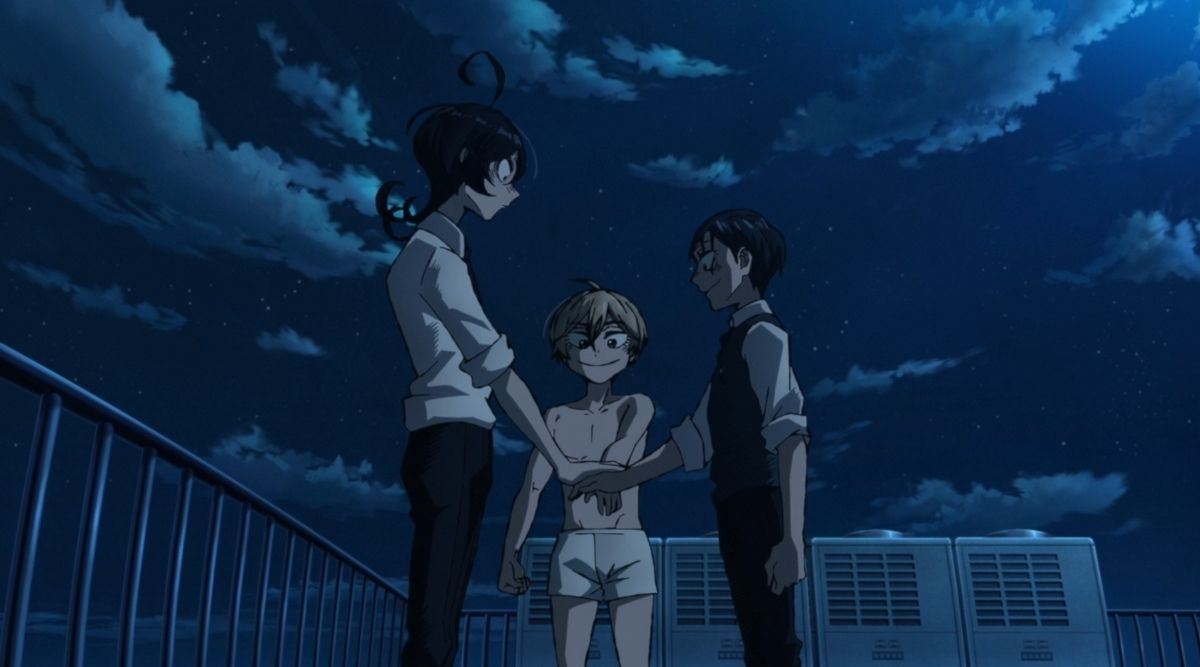
Sanda Episodes 1-2 flesh out this dystopian Japanese world well, providing lots of exposition through the chaos. While it’s a lot to take in over the two episodes, the pacing to get to the next action or suspense set piece follows closely behind. The expository lines also may contain some shock value, such as in Episode 2.
Sanda explains the year is “Tenshi Year 5, where there are roughly 50,000 citizens under the age of 15. That’s a mere 0.1 percent of the population of Japan.” These explanatory moments are also important to understand what Sanda’s powers are in Santa form. Essentially, the characters around Sanda act as a great narrative tool for the anime’s viewers.
There’s also plenty of peculiar or funny lines thrown into the mix to throw the casual viewer off. The first line of the manga and anime comes from Sanda, saying, “You know, a girl’s butt is colder than I imagined.” So far, Sanda’s inner monologue appears to be the main focus, and it’s filled with thoughts most adolescent boys are thinking at his age.
Sanda could be the perfect anime diamond in the rough with the holiday season around the corner.
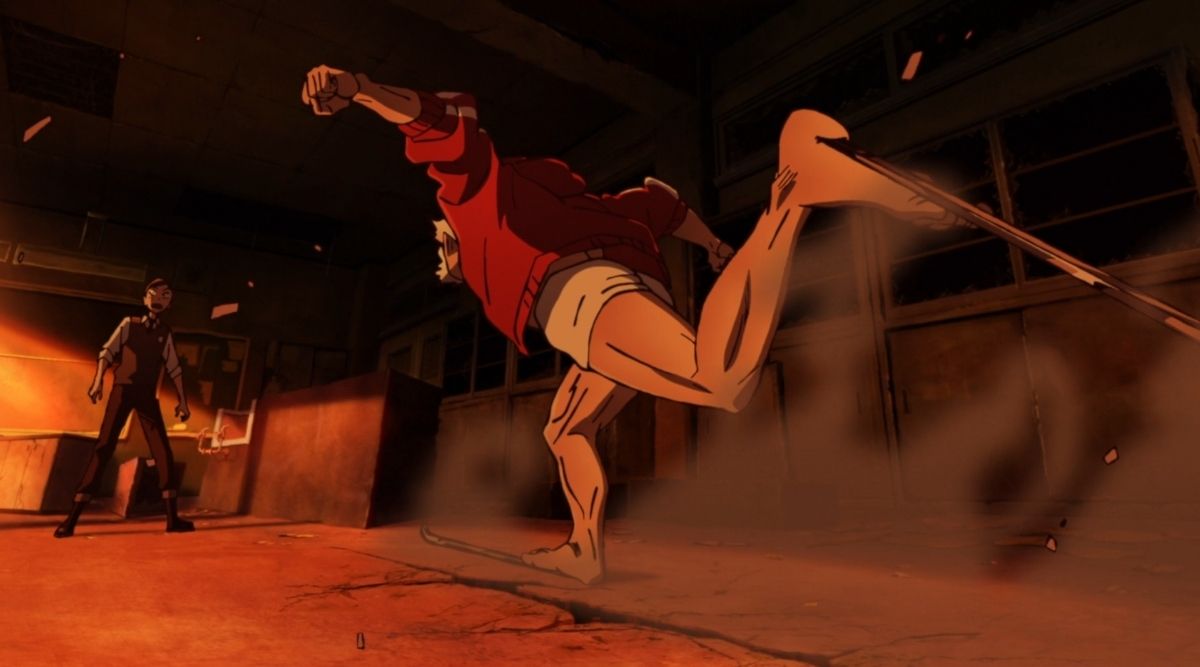
For a show with plenty of chatty kids, there is one big mystery: How do certain people know Sanda can turn into Santa? This is a major question Sanda presents with Fuyumura in Episode 1, and again in Episode 2 with Amaya. No one has given Sanda an answer yet, but it makes for an exciting reveal later on.
Based on Sanda Episodes 1-2, the anime is already elevating the pages of the manga on the screen. From the color palette, sound design, and music, everything that could push the narrative from the pages is being amplified. While DanDaDan may be Science SARU’s big feature right now, Sanda could be that diamond in the rough.
With many prominent series returning this fall, Sanda is shaping up to be the underrated anime of this season—perfectly setting its audience in the upcoming holiday mood that’s right around the corner.
Sanda Episodes 1-2 are streaming now on Prime Video, with new episodes every Friday.
| Next Episode
Sanda Episodes 1-2
-
Rating - 8/108/10
TL;DR
Based on Sanda Episodes 1-2, the anime is already elevating the pages of the manga on the screen. From the color palette, sound design, and music, everything that could push the narrative from the pages is being amplified.

